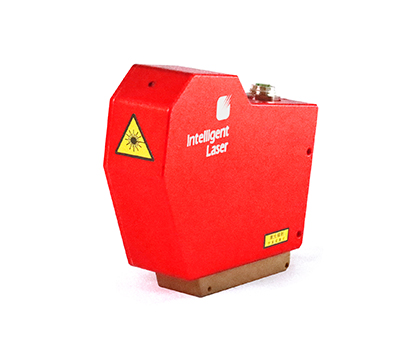The CMOS camera of the weld seam tracking sensor
The main function of the CMOS camera in the weld seam tracking sensor is to read the image. The CMOS control chip controls the current generated by the photodiode through the control signal line in the photosensitive element, and outputs it through the current transmission circuit. The CMOS camera collects the electrical signals generated by a single imaging, and outputs them uniformly to the amplifier. The electrical signals, amplified and filtered, are sent to the A/D converter, where the analog signals are converted into digital signals, with the size of the values being proportional to the strength, intensity and voltage of the electrical signals. These values are actually the data of the image.
However, only relying on the image data obtained from the previous step cannot directly generate images, and they need to be output to the digital signal processor (DSP). In the DSP, these image data are processed in post-processing such as color correction and white balance adjustment.
The semiconductor laser of the weld seam tracking sensor
A laser source that generates power through a linear generator, featuring uniform density, high straightness, good stability, and outputting in a straight line. The laser has both red and blue options and can choose the appropriate wavelength angle and linewidth according to specific customer requirements.
The filter protection lens of the weld seam tracking sensor
Since the smoke and splashes generated during the welding process will have a certain influence on data collection, each sensor must be equipped with a filter protection lens, which is used for protecting the laser and camera, and can also filter the light.
When there is dirt on the surface, it must be replaced in time. During the installation and replacement of the protective lens, any adhesive or even fingerprints or oil droplets will increase the absorption rate of the lens, reducing its service life, so cleaning the lens cannot be ignored.
The anti-splash baffle of the weld seam tracking sensor
Mainly used to block the interference of arc light, splashes, and smoke on the laser, so that the sensor system is more accurate and stable when in use.
The air-cooled device of the weld seam tracking sensor
Due to the high temperature during welding, most devices now use air cooling systems, which are used for cooling the sensor and extending the service life of the weld seam tracking sensor.
The protection level of the sensor's casing is IP67, and it is suitable for use at temperatures between 5℃ - 45℃. If necessary, an additional water-cooled mounting plate can be used to cool the sensing head.
The sensor completes the online real-time detection of common weld seams through a complex program algorithm. There are corresponding functional settings for the detection range, detection ability and common problems in the welding process. The equipment calculates the deviation data between the detected weld seam and the welding gun, and outputs the deviation data. The motion executing mechanism corrects the deviation in real time and accurately guides the welding gun for automatic welding, thus achieving intelligent real-time tracking of the weld seam in the welding process.

